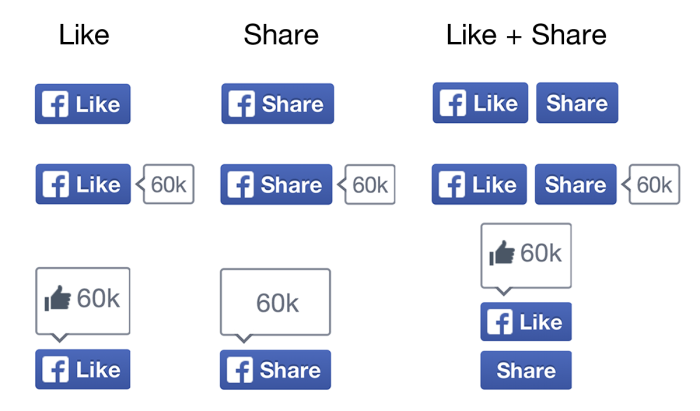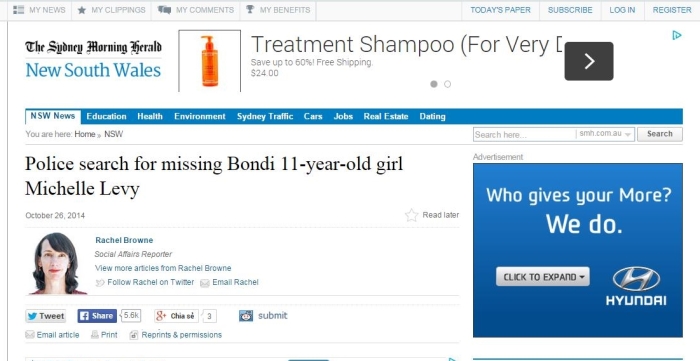Whenever I check my Facebook, I often see news articles shared by my friends. If they are interesting, I will share with some or many others in my friend list. If a friend “like” a news article, it also appears in my page. Just by clicking “share” or “like” buttons, the information is disseminated to many others, who, by chance, read it thanks to their friends’ sharing. Meanwhile, if you want to share via email or SMS, you need to copy the URL, find people you want to share and send the link. The convenience brought by social media tools has helped increase the volume of news stories shared as the amount of sharing via social media has increased. As the users of social network sites (SNSs) keep rising (one person can have multiple online identities), it seems that sharing news via SNSs is the most frequent and easiest way people do today.
According to Hermida et al (2012, p.815 ), “news organizations are rushing into social media, viewing services like Facebook and Twitter as opportunities to market and distribute content.” They add social networking functionality to websites, encouraging users to ‘‘like’’ or ‘‘tweet’’ a story, in order to disseminate it. Olmstead et al. suggested that “if searching for news was the most important development of the last decade, sharing news may be among the most important of the next” (2011, p10).
Let’s look at a Sydney Morning Herald’s online story about a missing girl. The information was shared the most via Facebook, with 5,600 times (by the time I copy this picture).
The share buttons with FB/Twitter/Google+…icons below the image of the journalist allow readers to share the article on their SNSs and it can be seen by many other people. These people do not have to access directly to SMH’s website but still have a chance to read the article thanks to their friends’ action of sharing.
What is people’s most favourite SNS to share news? Facebook. Yes, it is true. About 1.3 bln people or one fifth of the world, log on FB at least once a month. According to SimpleReach statistics, it makes up 20 percent of traffic to news sites. On mobile devices, the rate is much higher and keeps increasing as the number of readers on mobile platform is growing fast.
But when everything goes online, do people change their habit of reading printed publications? Is this the end of printed publications?
My father used to work in a news agency the publications of which include printed newspapers specialized in sports and sciences, among others. I still remember about 25 years ago, whenever there were important sport events in the world, especially relating football, such as World Cup or Euro, football fans queued a long line from early morning to buy a sport newspaper to get “update” information of the matches.
As technology develops, gone are the days people thronged to buy a newspaper. When everything goes online, people’s once habit of reading newspapers seemed to be replaced. Smartphones, tablets…are now more popular and convenient, offering users various chances to access information/news stories and sharing, instead of waiting until the next day for a “new” newspaper. Today, on bus, train or on the street, we often see people, especially the young, stick their eyes on the screen of their smartphones. What do they do with their phones? Checking-in with Facebook, selfie, sharing photos, news and many other things. It seemed that there is little room for printed newspapers these days. The world’s media industry witnessed the closure of many printed publications, including big name Newsweek which discontinued its printed version in late 2012 after 80 years and went all digital.
When everything is available on the public domain and can be shared easily, news organisations, as a result, have to learn how to update news in the fastest way to meet the readers’ demand. This poses pressure to journalists, who are making use of SNSs, especially Twitter, as a tool for breaking news or a source for finding news stories. Technological development requires journalists to have multi skills to catch up with technology. As a result, I myself not only have to improve my reporting skill but also learn how to use SNSs and apply their advantages in my work./.
Reference:
Hermida, A, Fletcher, F, Korel, D and Logan, D 2012 ‘Share, like, recommend: Decoding the social media news consumer’ Journalism Studies, Vol. 13, issues 5-6, pp 815-824.


